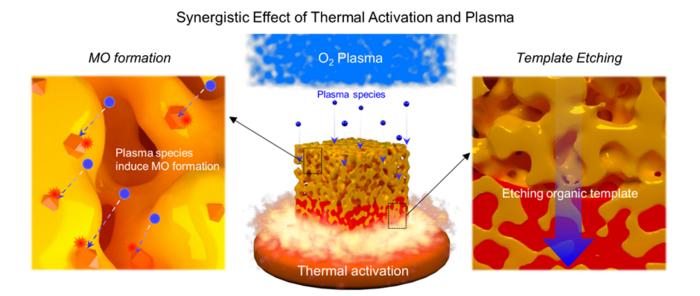Revolutionary 3D Technology Sets the Stage for Advanced Eye-Tracking Innovations
In an astonishing breakthrough, researchers at the University of Arizona have harnessed the power of a cutting-edge imaging technique known as deflectometry to transform the landscape of eye-tracking technology. This innovative approach promises to significantly enhance the accuracy and resolution of gaze tracking, a vital component in numerous fields including virtual reality, gaming, automotive technology, […]

In an astonishing breakthrough, researchers at the University of Arizona have harnessed the power of a cutting-edge imaging technique known as deflectometry to transform the landscape of eye-tracking technology. This innovative approach promises to significantly enhance the accuracy and resolution of gaze tracking, a vital component in numerous fields including virtual reality, gaming, automotive technology, and even medical diagnostics.
The study, recently published in Nature Communications, introduces a revolutionary method in eye tracking by utilizing deflectometry, a technique traditionally employed in the evaluation of reflective surfaces. By leveraging advanced computational models alongside this technology, the team led by Florian Willomitzer has managed to capture gaze direction with unprecedented precision. This level of accuracy is critical in advancing the capabilities of eye-tracking systems to provide more intuitive interaction in applications where understanding a user’s gaze can transform the experience.
Currently, conventional eye-tracking methods can only gather directional information from a limited number of surface points—around ten to twelve. This limitation hampers the potential for capturing the nuances of gaze direction. However, with the new deflectometry-based method, the researchers can utilize information from over 40,000 surface points, and potentially even millions, gathered from a single camera image. This vast array of data points opens the door to significantly improved accuracy in gaze direction estimation, a game-changer for next-generation applications in augmented and virtual reality environments.
Willomitzer, an associate professor at Wyant College of Optical Sciences, stated that traditional systems lack the depth of information required for sophisticated applications. In contrast, the researchers’ method allows them to capture a much richer dataset using instant images of reflective patterns on the eye’s surface. This not only enhances the accuracy of gaze tracking but also allows for a more natural interaction with devices, particularly in VR settings where understanding user gaze is essential for immersion.
The underlying principle of deflectometry revolves around the precise measurement of surface deformations. By projecting structured light patterns onto the eye and analyzing how these patterns change upon reflection, the research team can extract detailed 3D surface data from both the cornea and the sclera. This level of detail was previously unattainable with traditional tracking systems, which relied on fewer data points and less effective methodologies.
The implications of this research are monumental. With gaze estimates becoming as precise as just 0.46 to 0.97 degrees during tests on real human eyes, the technology can be fine-tuned even further. The artificial eye model showed an impressive accuracy of approximately 0.1 degrees, showcasing the method’s potential in real-world applications. The advanced capabilities of deflectometry enable researchers to discern gaze direction without reliance on infrared light sources, thereby simplifying the system.
In addition to enhancing commercial eye-tracking technologies, the researchers foresee applications in medical fields, such as diagnosing and treating eye disorders. The ability to create a dense and accurate reconstruction of the eye’s surface could facilitate on-the-fly diagnostics, leading to timely and potentially life-altering medical interventions. The researchers emphasize that as the technology evolves, it may also integrate seamlessly with future virtual reality systems without necessitating visible patterns, thus ensuring an undistracted user experience.
Willomitzer highlighted the unique aspect of their methodology, stating that it does not require firm assumptions regarding the shape or condition of the eye. This adaptability not only makes eye tracking applicable across diverse users but also paves the way for developing a robust system that can operate effectively in various settings. Furthermore, the potential for leveraging machine learning and additional 3D reconstructions positions the team to possibly close in on sub-degree accuracy levels that could redefine standards in eye-tracking systems.
As the team advances towards commercialization with a pending patent and collaboration through Tech Launch Arizona, they aim to enhance this technology to meet real-world demands. The promise of improved accuracy and accessibility could stimulate a wave of innovative eye-tracking applications, extending beyond entertainment into neuroscience research, psychology, and behavioral science.
This pioneering research underscores a significant leap forward, wherein the integration of deflectometry introduces a paradigm shift in capturing gaze dynamics. As eye tracking becomes increasingly essential in various sectors, the convergence of optical sciences with computer vision heralds a new era, enabling machines to glean insights far beyond human perception.
The advances reported in this study illustrate not only the technological prowess of the University of Arizona’s team but also their vision for the future of eye tracking. Through interdisciplinary collaboration and innovation, they aim to unlock the full potential of gaze-tracking, ensuring that the technology keeps pace with the demands of an evolving digital landscape.
In conclusion, the integration of deflectometry into eye-tracking technology represents a transformative approach with the capacity to redefine user interaction across multiple domains. With ongoing research and development, the potential applications are only limited by the imagination, paving the way for smarter, more responsive systems that harness the depth of human visual attention.
Subject of Research: Eye tracking technology using deflectometry
Article Title: Accurate Eye Tracking from Dense 3D Surface Reconstructions using Single-Shot Deflectometry
News Publication Date: 1-Apr-2025
Web References: Wyant College of Optical Sciences, Nature Communications DOI
References: [Not applicable]
Image Credits: Credit: Florian Willomitzer
Keywords
eye tracking, deflectometry, computer vision, augmented reality, virtual reality, optical science, gaze direction, computational 3D imaging, technology innovation, precision tracking, medical diagnostics, neural interfaces.
Tags: 3D eye-tracking technologyadvanced gaze tracking innovationsautomotive technology improvementscomputational models in imagingdeflectometry imaging techniquegaming industry advancementsgaze direction accuracymedical diagnostics enhancementsprecision in eye trackingtransformative user interaction experiencesUniversity of Arizona researchvirtual reality applications
What's Your Reaction?


































